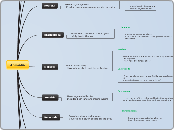作者:Kayla Joe 14 年以前
3383
Invertebrates: Phylogenetic Tree

作者:Kayla Joe 14 年以前
3383

更多类似内容
-Have a translucent, fish-like body -Have no true skeleton
-They undergo regeneration -They usually have five segments (legs)
-They are round in shape -They are covered in spikes
-Have no antennae or wings -They are carnivorous
-The head has two antennae -Some are hermaphroditic
-Have a more sophisticated pharynx -Have three esophageal glands
-Live in some of the coldest and hottest temperatures -The head projects over the mouth and contains antennae
-They live almost everywhere (wetlands, forests, rivers, etc.) -Have shells (snails) or no shells (slugs)
-Some attach to surfaces, while some bury themselves underground -Most have two hinged shells
-Have tongue-shaped shells -The shell is composed of chitin, protein, and calcium phosphate
-Have jaws in the pharynx -Have a digestive tube
-Have no digestive tract -Unsegmented acoelomates
-Do not have a "medusa" stage in development -Can reproduce sexually and asexually
-Have four part symmetry -Have an internal material called mesoglea, which gives it structure (much like a skeleton)
-Have a skeleton made of four or six pointed siliceous spikes -Believed to live anywhere from 15,000 to 23,000 years